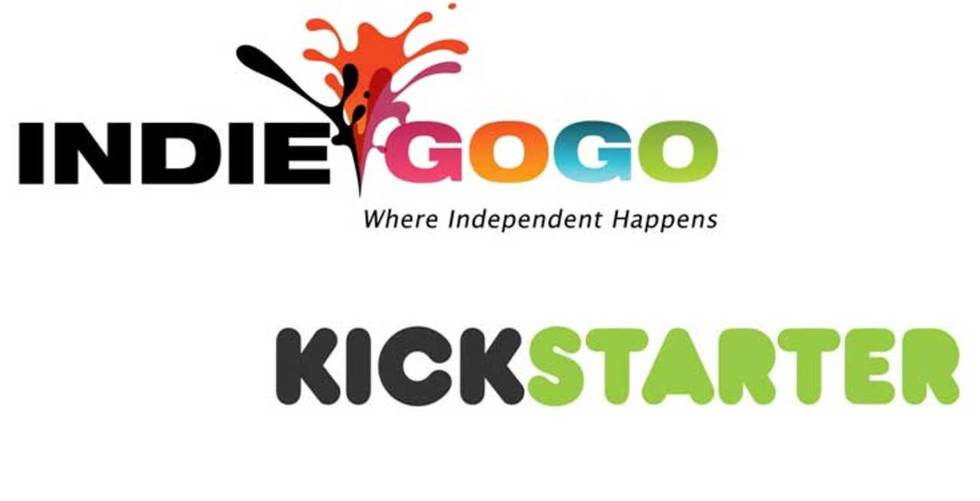
BY CHRIS DORR |
Should Filmmakers Crowd-Fund Their Next Movie?
Should you reach out to the crowd to help fund your next film? No one can promise it will be easy, but it's definitely something to consider.

There is nothing more frustrating and time-consuming for filmmakers than raising the money they need to make their next project. Whether shopping for funds from a studio, asking for money from a foundation, getting a presale from a distribution partner or asking for a contribution from friends and family, it is never fun and never easy.
Over the past three years, a new method of raising funds has emerged that is quickly gaining momentum. Using social web-based tools provided by services like Kickstarter and IndieGoGo, filmmakers can now raise money straight from the “crowd.”
On this blog we have had some excellent pieces written about what is now called “crowd-funding” by Jennifer Fox, Slava Rubin and Melanie Schiele. They highlight the experiences of filmmakers who have crowd-funded their movies, and provide useful tips for those who wish to pursue this strategy for their future films.
Crowd-funding is part of a massive shift created by the rapid rise of social media that is radically redefining the relationship between the filmmaker and her audience. As with other parts of the filmmaking process (production, marketing and distribution, to name a few), the audience now wants to participate—or, as Frank Rose puts it, they want to “immerse” themselves in the film.
What does this “immersion” mean when applied to the financing of movies?
When someone crowd “funds” a movie, she is not seeking an investment return that is expressed in dollars. The value that she seeks is something different altogether.
It is much like what a traditional (and almost always wealthy) patron gets when he gives to the symphony or the opera, or commissions an artist’s work. He gets recognition, (name in the program, on a building, etc.), a chance to meet the people behind the scenes, and, most importantly, a chance to connect with the person who has created the art.
In the process, he gains an emotional connection to the art itself. He becomes “immersed” in the art. In this traditional model, the barrier to entry is high, but so are the psychic rewards.
With the rapid rise of social media, something strange and very wonderful has happened:
1. The barrier to entry into this “immersive” experience has been dramatically lowered, while at the same time
2. The psychic rewards of the experience have remained very high.
In other words, the tools of social media have democratized patronage for the first time in history. Experiences that were previously open only to the very wealthy are now open to the “crowd.” Now everyone can be Medici, Guggenheim or (fill in your favorite famous patron to the arts).
And on the flip side, artists who could never access the wealthy patrons of yesterday can now connect with the newly empowered crowd patrons of today.
New services like Kickstarter and IndieGoGo, as well as others, have enabled this emerging patronage market. So how is that market doing?
A recent blog post by Kickstarter highlights the status of this market. As of July 17, 2011, 10,000 projects have been successfully funded on Kickstarter (of these, 3,048 have been in the Film and Video category). A total of $60 Million has been received from 793,362 backers.
That is a lot of money from a lot of patrons. What is most impressive is how fast the market is growing.
As the Kickstarter post says:
“The march towards 10,000 successfully funded projects has accelerated a lot over the past two years. Exactly one year ago today Kickstarter had seen a lifetime total of 1,885 successful projects. The past year alone has seen nearly five times that."
The amounts raised for films have ranged from $5,000 to $150,000 to over $345,000 for the film Blue Like Jazz. So as the overall market has expanded, so have the amounts raised.
Is it easy to raise money from the crowd? The answer is, emphatically, ”No, it is not.” It is time-consuming, tense, exhausting, filled with ups and downs, fraught with anxiety, and guaranteed to keep you up at night. Just like raising money for your movie always is.
But if you get the money, you make the movie you want, and you don’t owe anyone any money in return.
All you owe to your patrons is an emotional connection to the movie, and a chance for them to immerse themselves in your movie. An experience, by the way, that will lay the basis for the marketing and distribution of your movie.
So the question for filmmakers is not whether or not you should crowd-fund your next movie; the question becomes when you will do it. I suggest you get cracking.
And filmmakers: just remember to respect and treat your patrons like they are the Medicis, because that is exactly who they are.
